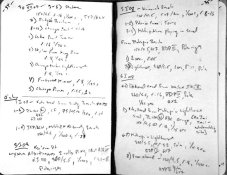haziz
Member
What system do you use to keep track of your N, N- and N+ exposed sheets? Post-it notes stuck to the holder? Individually numbered holders/sides with detailed records? Other method?
How do you keep track of your N, N- and N+ sheets after exposing without individually labeling every holder and elaborate record keeping? I am simply too lazy to do that, and hence tend to do only N development; except when using Quickloads, when I write on the individual envelope.
Thanks.
Sincerely,
Hany.
How do you keep track of your N, N- and N+ sheets after exposing without individually labeling every holder and elaborate record keeping? I am simply too lazy to do that, and hence tend to do only N development; except when using Quickloads, when I write on the individual envelope.
Thanks.
Sincerely,
Hany.
Last edited by a moderator:














